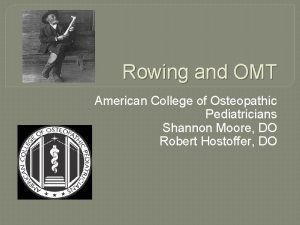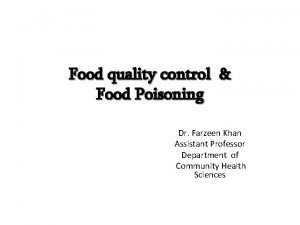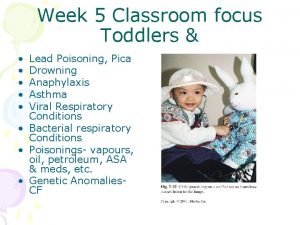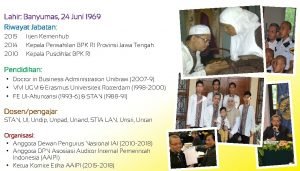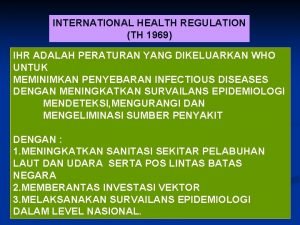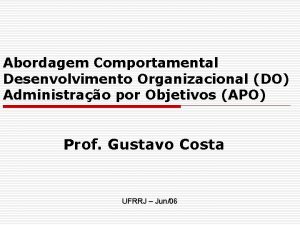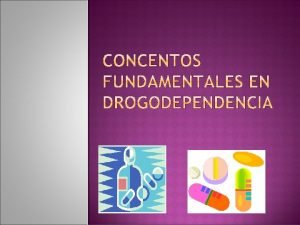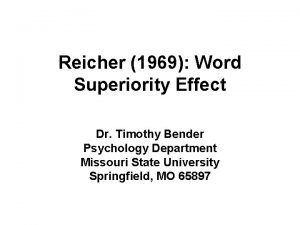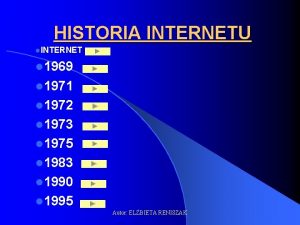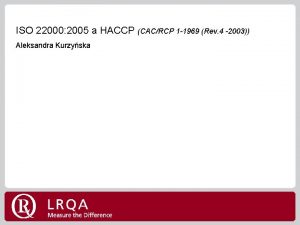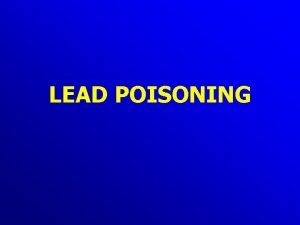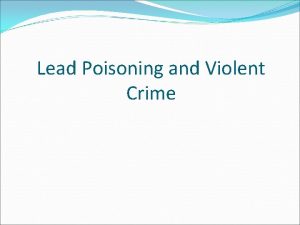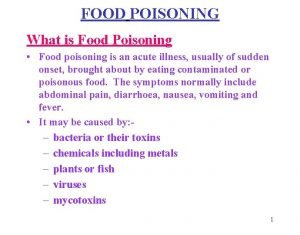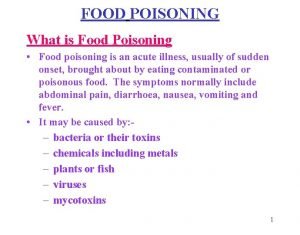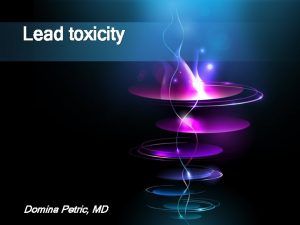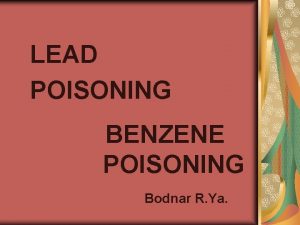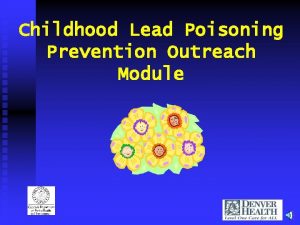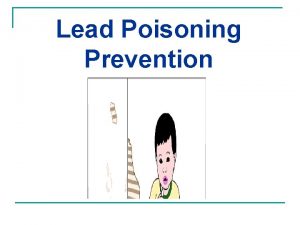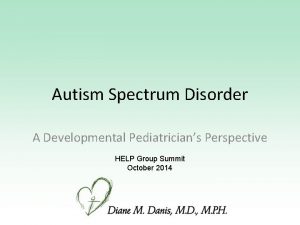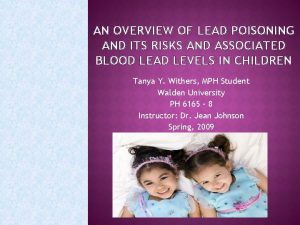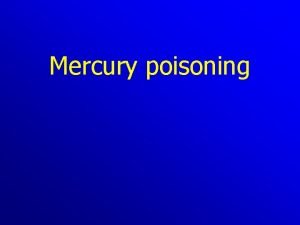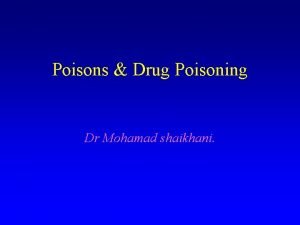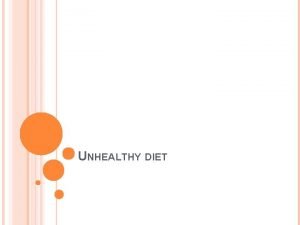Lead Poisoning A Pediatricians Perspective 1969 2016 Its













































- Slides: 45

Lead Poisoning: A Pediatrician’s Perspective (1969 -2016) It’s Still the Lead Paint Howard L. Weinberger, MD Professor Emeritus of Pediatrics Upstate Medical University November 8, 2016

Disclaimers and “Confessions” �I have no connection (formal or otherwise) with the paint industry �I have served as the Medical Consultant to the Onondaga County Health Department since 1969 �I am the Medical Director of the Central/ Eastern New York Regional Lead Poisoning Resource Center (1986 -present) which is funded by the NY State DOH

Objectives: � To provide a brief history of lead poisoning in the US as a Public Health Success Story � To recognize three “Heroes” in this Story � To explain how much we have learned about the effects of lead in children, while “basking” in our success � To explain why lead poisoning is still a problem for children and will be a concern well into the future

Brief Review of Lead Poisoning � Lead is a valuable element ◦ It is ubiquitous in nature ◦ It is useful in industry �At least as early as the Roman Empire (PLUMBING) It was also used as a preservative and a sweetener for making wine �In the paint industry, it is used to make white paint whiter and to enhance the brightness of color paints �Today it is found in the computer industry � And, it never degrades

The Bad News � Lead is toxic ◦ Benjamin Franklin letter to a friend (1786) ◦ Brisbane Australia (1892) ◦ First description in the US (1914) (seizures and death) ◦ Lead toxicity causing long term deficits (1943) ◦ No clinical signs – yet subtle deficits (1970’s)

Case History: N. L. – born 1965 � 6 year old with global developmental delay; UA with glycosuria and proteinuria � Flat plate of his abdomen showed radioopaque “flakes” and venous blood level 236 ug/d. L � Chelation with BAL and Ca EDTA � Day 2 of treatment, BLL: 102 ug/d. L; hypertensive & comatose. Treated with mannitol and steroids (for presumed lead encephalopathy). Second course of chelation. � Day 27 of treatment, he died.

What can we learn from this case? � In 1971, there were few services for children like N. L. ◦ No Early Intervention ◦ Head Start had just begun in the late 60’s ◦ There was no universal Pre- K � His parents described pica behavior, but were unaware of the potential hazard of lead paint in their home

What can we learn from this case? And, I hoped I would never have to treat another child with lead poisoning

Main Sources of Lead Exposure in Children � Leaded � Lead gasoline Paint

Creating the lead burden in the US In the 1920’s, lead was added to gasoline to reduce “knocking” in the internal combustion engine in the auto industry (thanks to the efforts of General Motors) And, Despite the efforts of Dr. Alice Hamilton (the first Hero of our Public Health Success Story)

First Hero Alice Hamilton, MD (1869 -1970)

Alice Hamilton, MD � MD from the U of Michigan � First woman on the faculty at Harvard – Dept of Industrial Medicine � 1911 - published a study demonstrating the prevalence of lead poisoning in industry � Early 1920’s – warned against adding tetra-ethyl lead to gasoline � 1995 – U. S. postage stamp in her honor Brush With Death: A Social History of Lead Poisoning, Christopher Warren Johns Hopkins Press, 2000


Main Sources of Lead Exposure in Children � Leaded � Lead gasoline paint 1978 - federal legislation limiting the amount of lead in indoor paint

Dennis Nett: Syracuse. com 9/15/2016

“Snap shot”of pre-1979 Housing in Central New York United States 58. 2% NY State 79. 2 Broome Cayuga Chenango Cortland Herkimer Jefferson Lewis Madison Oneida 80. 4 72. 7 70. 2 79. 7 75. 3 62. 5 64. 9 69. 9 79. 2 Oswego St. Lawrence Tompkins 64. 7 71. 1 65. 0 Onondaga 74. 8

Blood Lead Testing � 1991 Mandate by NYState DOH ◦ Blood lead testing on all children at one and two years of age – with risk assessment until age 6 � Currently, only 11 states and Washington, DC mandate some testing http: //www. reuters. com/investigates/special report/lead poisoning testing gaps

Effectiveness of the Mandate % of children with two blood lead tests by three years of age NY State 56. 3% Onondaga County 41%* In the early 1990’s ~1 million preschool children had BLL’s >10 mcg/d. L In 2016, ~500, 000 preschool children have blood leads >5 mcg/d. L** * NY State Community Health Indicator Report (2012 -2014) **Prevention of Lead Toxicity Council of Environmental Health, American Academy of Pediatrics; 138: 1, July 2016

Biologic Effects of Lead on Adults & Children

Major Organ Systems Affected � Effect on Heme synthesis � Effect on the brain and nervous system

Effect on Heme Synthesis

Examples of Lead Toxicity in the Nervous System � Distortion of enzymes and proteins � Lead competes with calcium for binding sites, affecting neural signaling � Diverse effects on the CNS ◦ Interferes with myelin formation ◦ In high doses, causes brain edema Needleman, H. Lead Poisoning Annu. Rev. Med. 2004; 55: 209 -22

Lead poisoning in the 1950’s � In the 1950’s, Baltimore was arguably the epicenter of childhood lead poisoning � Some questioned why other communities were missing cases of lead poisoning � An “epidemic” of lead poisoning in Chicago was recognized by Dr. Robert Mellins ( a USPHS officer assigned to study an outbreak of Poliomyelitis) Ref: Lead Wars – Markowitz, G and Rosner, D U. of Calif. Press, Berkeley, CA, 2013

Second Hero Dr. Herbert Needleman

Dr. Herbert Needleman � MD from U. of Pennsylvania � Residency in Pediatrics and Child Psychiatry � Encountered children hospitalized with very high BLL’s associated with exposure to lead paint in their homes � Professor of Pediatrics and Child Psychiatry – U of Pittsburgh Medical School � Published research on relationship of dentin lead and behavior in school aged children (NEng. JMed 1979)

Distribution of Negative Ratings by Teachers on 11 Classroom Behaviors in Relation to Dentine Lead Concentration. Needleman HL et al. N Engl J Med 1979; 300: 689 -695

Other Correlations with Elevated Blood Lead Levels Effect of blood lead levels on IQ -for every 10 mcg/d. L rise in BLL, there is a decrement of 6 IQ points* - estimate of 23 million IQ points lost in a 6 year cohort of children** Correlations have been reported about violent behavior in young adults and childhood exposure to lead*** *Policy Statement – Prevention of Childhood Lead Toxicity. Pediatrics V 138: 1, July 2016 **Bellinger, DC A Strategy for comparing contributions of environmental chemicals and other risk factors to neuraldevelopment of children. Environ Health Perspect 2012: 20(4): 501 -507. ***Stretsky, PB and Lunch, MJ The relationship between Lead Exposure and Homicide. Arch Ped Adol Med 2001; 155: 579 -82 Reyes, JW Environmental Policy as Social Policy? The impact of childhood lead exposure on crime. BE J Econ Anal Policy 2007; 7(1) 1 -41

Evidence of Success CDC’s Action Level for Blood Lead in Children has Steadily Declined 1960 -1970 -1985 - 1991 - 2011 2012 -present * CDC “Reference Value” 60 mcg/d. L 30 mcg/d. L 25 mcg/d. L 10 mcg/d. L <5 mcg/d. L*

The Prevention Paradox: Loss of IQ in US Children @ Different Levels of Blood Lead AAP Policy Statement Pediatrics 7/2016

Main Sources of Lead Exposure in Children � Leaded gasoline � Lead paint � What about the water?

What about the water? The Third Hero Dr. Mona Hanna- Attisha

Dr. Mona Hanna- Attisha � MD from Michigan State University (Flint) � Resident in Pediatrics – Children’s Hospital Detroit � MPH from U of Michigan School of Public Health � Currently, Director of Ped. Residency at Hurley Medical Center (Flint, Michigan) � Director of “Pediatric Public Health Initiative”

Contribution of Lead Exposure to Children’s Blood Lead Concentration (from Lanphear et al) AAP Policy Statement Pediatrics 7/2016

AAP Policy Statement Pediatrics 7/2016

Case history: BF born 2013 � 3 ½ year old from Watertown with Autism � Blood lead level of 5 ug/d. L at one year of age (not tested at 2 years) � Noted to have pica behavior and mother said he was constipated � Blood lead tested by Developmentalist in Rochester -64 ug/d. L � Admitted for chelation to Golisano Children’s Hospital (September 2016)

What can we learn from this case? � In contrast to our first case (1971) ◦ Many services were available to this child with a diagnosis of Autism ◦ Early Intervention ◦ Early Head Start ◦ Developmental pediatrician � Parents noted his pica behavior and a blood lead test was ordered

The sad part is that he did not have a blood lead test at 2 years of age, as mandated, which might have identified his lead exposure earlier and avoided the need for chelation

Another Measure of Success Lead Chelations at Upstate Mobilization tests * 1982 36 1985 26 1989 20 1993 19 1998 2010 2015 2016 Chelations 31 28 18 21 13** 20 18 15 (to date) *Weinberger, HL, Post, EM et al An Analysis of 248 Initial Mobilization Tests Performed on an Ambulatory Basis. Am. JDis. Child, 1987; 141: 1266 -1270 ** Chelations done in the Central/Eastern Region of NY State


Poverty Iron Deficiency Lead Poisoning

Lessons I Have Learned � Although lead is an “equal opportunity” toxin, the great majority of clinical cases occur in children living in poverty � There are many sources of exposure to lead in our environment, but Old Leaded Paint is still the main source of exposure for children in the U. S. � There is no safe blood lead level � Lead Poisoning is preventable � Primary prevention makes sense

Primary Prevention Actions � Removal of lead from gasoline (1970’s) � Limiting lead in household paint (1978) � “Selective” home renovations (windows and door frames – Rhode Island) � Blood lead testing at one and two years of age (limited to 11 states) � Real estate disclosures of lead hazards prior to rental/sale � Pro-active home assessment of lead risk (Rochester, NY) “Test homes, not Kids”

Areas of Concern and Challenges � Cooperation of medical providers (incl OB’s) -prenatal exposure to lead � Lead exposure in New Americans (before and/or after resettlement) � Cost of home renovations to make them “lead safe” � Cost of new lead-free housing � “Lead Fatigue”

Acknowledgements “Collaborators” over the years Medical students, countless residents and nurses (who helped care for our patients over the years) and faculty colleagues Special mention: S. Blatt, J. Boyd, D. Clark, C. Crosley, J. Friedman, B. Helu, J. Henderson, A. Levy, B. Mc. Carthy, H. Mintz, R. Nelken, E. Post, M. Weitzman, T. Schneider Colleagues from OCHD: M. Burdick, S. Klineberg, D. Lewis And, extra-special mention- M. Butler and T. Hobart

CENTRAL / EASTERN NEW YORK LEAD POISONING RESOURCE CENTER Medical Director – Howard L. Weinberger, MD Assoc. Director – Travis Hobart, MD Program Coordinator- Maureen Butler, RN
 Rib raising omt
Rib raising omt Whats lead poisoning
Whats lead poisoning Common factors that can lead to food poisoning
Common factors that can lead to food poisoning University of washington
University of washington Subcostal retractions
Subcostal retractions Nero lead poisoning
Nero lead poisoning Lead magnesium niobate/lead titanate
Lead magnesium niobate/lead titanate 1 point perspective house
1 point perspective house Silo perspective vs business process perspective
Silo perspective vs business process perspective Rip curl 1969
Rip curl 1969 1969 1970 1971 1972 1973 1974 1975 1976 1977 1978
1969 1970 1971 1972 1973 1974 1975 1976 1977 1978 Vclt 1969
Vclt 1969 Walter gropius (1883-1969)
Walter gropius (1883-1969) 24 juni 1969
24 juni 1969 History of manchester united f.c. (1945–1969)
History of manchester united f.c. (1945–1969) Copyright regulations 1969
Copyright regulations 1969 Chapter 26 section 2 the cold war heats up answer key
Chapter 26 section 2 the cold war heats up answer key Ffa history study guide
Ffa history study guide Ihr 1969
Ihr 1969 Konvensi wina 1969
Konvensi wina 1969 Bipartição
Bipartição What are the miranda rights
What are the miranda rights Sergei korolev
Sergei korolev Treaty 5 territory map
Treaty 5 territory map The pack beuys
The pack beuys Powerschool corunna
Powerschool corunna Beckhard 1969 desenvolvimento organizacional
Beckhard 1969 desenvolvimento organizacional Arpanet 1969
Arpanet 1969 What is the ffa creed
What is the ffa creed Oms 1969
Oms 1969 Persuasive paragraph example
Persuasive paragraph example Reicher 1969
Reicher 1969 The cold war heats up: 1945 - 1969
The cold war heats up: 1945 - 1969 Lyndon b johnson 1969
Lyndon b johnson 1969 Mary fleszar
Mary fleszar Skrombotoksin
Skrombotoksin Theodorson and theodorson 1969 communication
Theodorson and theodorson 1969 communication Gardner and gardner 1969
Gardner and gardner 1969 Branch expansion programme and policy
Branch expansion programme and policy 1966 1967 1968 1969 1970 1971 1972 1973 1974 1975
1966 1967 1968 1969 1970 1971 1972 1973 1974 1975 Natura pay taxas
Natura pay taxas Interface between user and hardware
Interface between user and hardware Historia internetu prezentacja
Historia internetu prezentacja Thinkfree office viewer
Thinkfree office viewer 2005 - 1969
2005 - 1969 Grażyna skrzypaczka zm.1969 r
Grażyna skrzypaczka zm.1969 r
